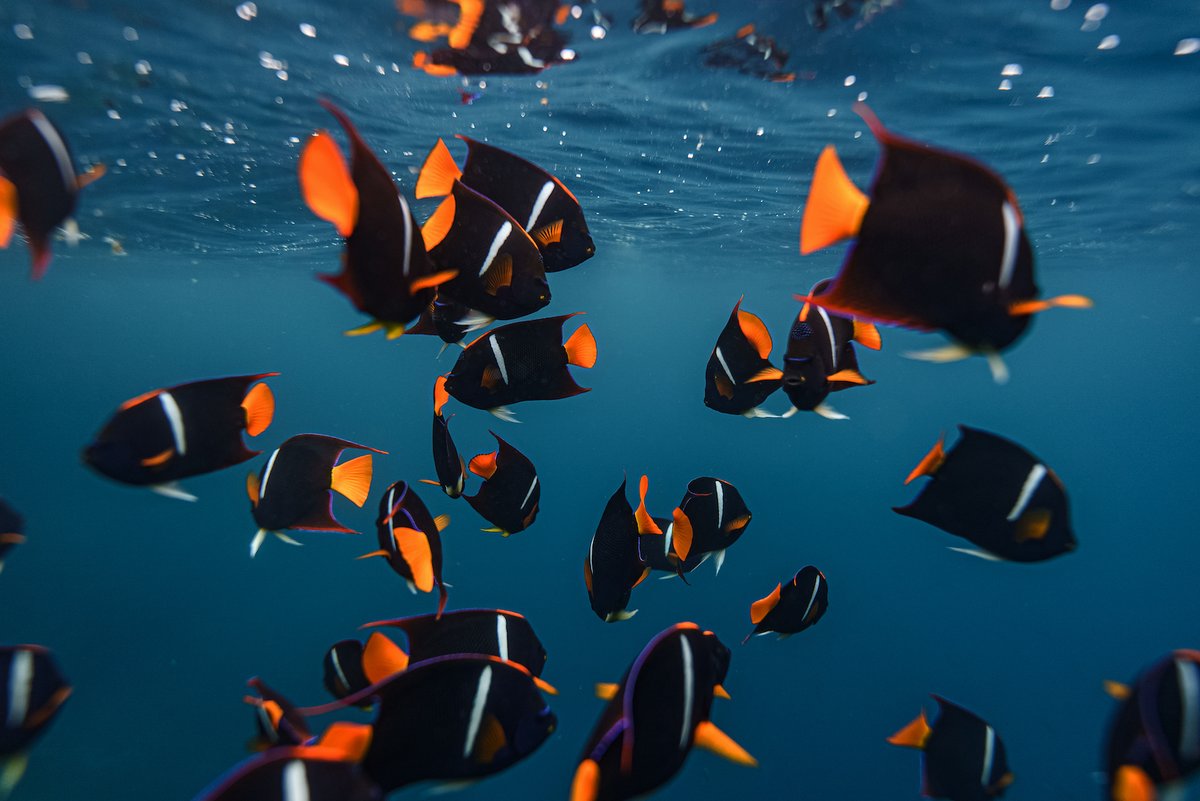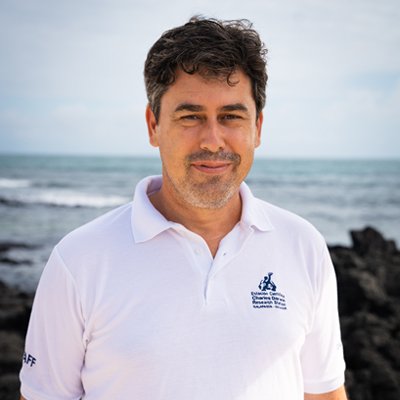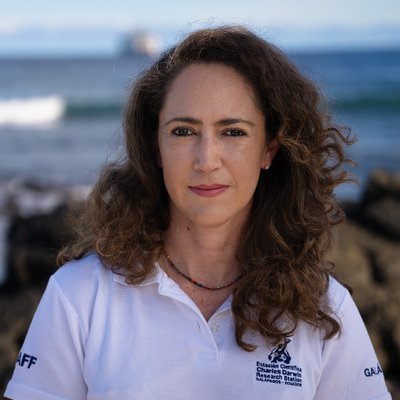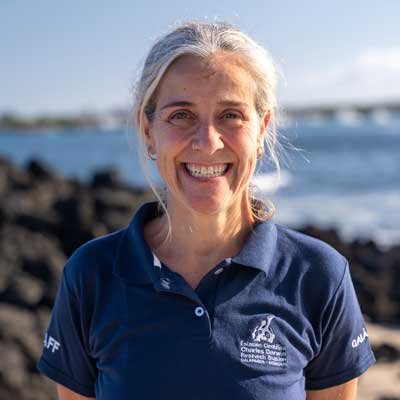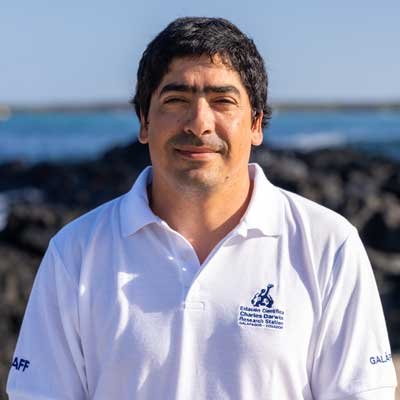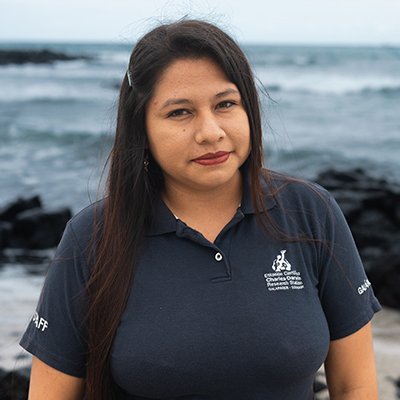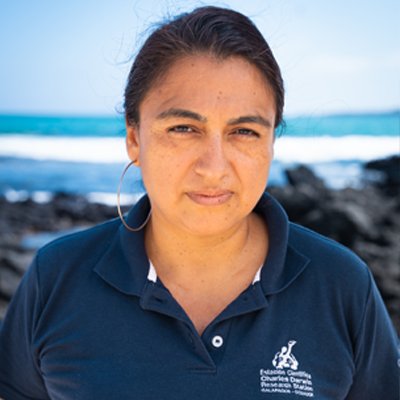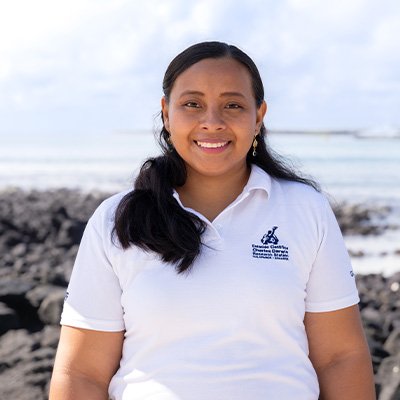The Eastern Tropical Pacific conceals extraordinary, vast deep-ocean ecosystems, plunging from oceanic islands to depths of 3,800 meter, most of which remain largely unexplored, presenting real challenges for effective protection and management. Despite their significance, these ecosystems are poorly understood and subject to persistent threats, including overfishing, climate change, pollution, and the prospect for deep-sea mining.
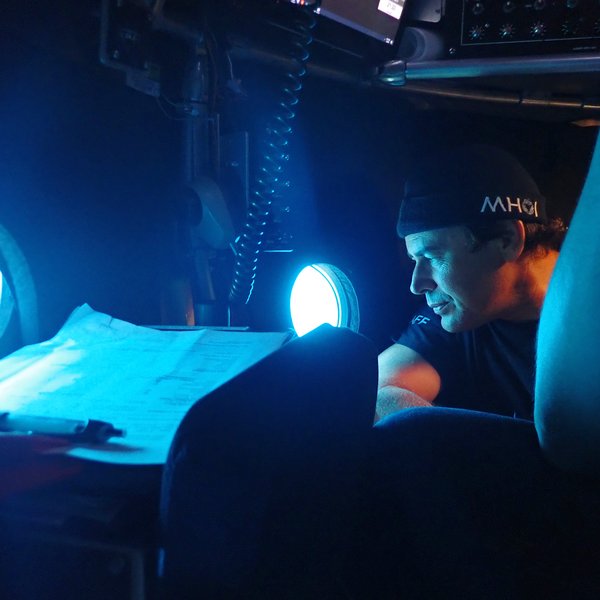
Our team
Stuart Banks
Principal Investigator - Deep-Ocean Exploration & Conservation
Carolina Torres
Manager of the Deep Ocean Project
Ana De la Torriente
Research Specialist
Germán Zapata Hernández
Senior Researcher
Diana Flores
Laboratory Manager
Nathalia Tirado
Marine Taxonomist
Yuliana Bajaña
Administrative Assistant for the Deep Ocean Program
Donors
Bezos Earth Fund
Gordon and Betty Moore Foundation
Other Collaborators
Ing. Jennifer Suarez, Galapagos National Park Directorate
Salome Buglass, PhD candidate UBC, Canada
Ana-Belen Yanez, PhD candidate, Memorial University, Canada
Dr Dan Fornari & Dr Tim Shank - Woods Hole Oceanographic Institute
Dr Katleen Roberts & Dr John Jamieson – Memorial University, Canada
Dr Amy Gartman – US Geological Survey
Dr Shannon Hoy – NOAA Deep-Ocean Exploration Program
Dr Cherisse DuPrezz – Dept. Fisheries and Oceans, Canada
Dr Verena Tunnicliffe – University of Victoria, Canada
Dr Silvia Earle – Mission Blue
Dr Jorge Cortes & Dr Odalisca Breedy – University of Costa Rica
Dr Hector Guzman – Smithsonian Tropical Research Institute
Dr David Alonso – INVEMAR, Colombia
Dr Dennis Geist – University of Idaho
Dr Laura Robinson – University of Bristol, United Kingdom
Dr Michelle Taylor – University of Essex, United Kingdom
Dr Roxanne Beinart – University of Rhode Island
Dr Jill McDermott & Dr Santiago Herrera – Lehigh University
Dr James Kershaw – CEFAS, United Kingdom
Dr Chen Chong – JAMSTEC, Japan
Dr Hedy Aardema – Max-Planck-Institut fur Chemie, Germany
Dr Peter Girguis – University of Harvard
Dr Terry Goslinger – California Academy of Sciences
Dr Amanda Bates – University of Victoria, Canada
Dr Monika Neufeld – Dalhousie University, Canada
Collaborating Institutions
INOCAR (Ecuador)
Galapagos National Park Directorate
Smithsonian Tropical Research Institute (Panama)
INVEMAR (Colombia)
University of Costa Rica
Friends of Cocos Island (FAICO), Costa Rica
Woods Hole Oceanographic Institution
Schmidt Ocean Institute
Videoray
Greenpeace Foundation
The challenge
The deep ocean ecosystems around the Galapagos Islands and in the Eastern Tropical Pacific (ETP) are vast, largely unexplored environments teeming with diverse species. Adapted to darkness and incredible pressures, these concealed ecosystems span vast depths and inspire imagination. Interconnected by currents bridging tectonic plates, they form the planet's most extensive marine living space.
Despite their crucial role in regulating global climate and providing essential services, these ecosystems face escalating threats like overfishing, climate change, and pollution. Research and conservation efforts are essential for their well-being and our collective welfare, yet studying them remains challenging and integration into marine planning is rare.
Eastern Tropical Pacific Marine Corridor (CMAR)
There is a majestic hidden seascape beneath the surface of the Eastern Tropical Pacific. Home to impressive yet rarely seen biodiversity, ecological processes between deep environments shape and influence our entire ocean region. Along the Galapagos Spreading Centre between the Nazca and Cocos plates, hydrothermal vents spew liquid fire supporting oases of life. A complex bathymetry over huge areas is patterned by deep sediments, stony outcrops of cold-water corals, rhodolith beds, silica sponge gardens and a host of often long-lived species uniquely adapted to those environments.
It is an impressive panorama. Seamount chains that rival the Andes form deep habitats that stretch between the Cocos and Carnegie Ridge, rising thousands of meters from the seafloor. Deep- and open-ocean environments are the migration routes, foraging grounds and nurseries for many marine species that move between or settle across insular Marine Protected Areas (MPA) such as Galapagos (Ecuador), Cocos Island (Costa Rica), Malpelo, Gorgona (Colombia) and Coíba (Panama).
Recognizing that the ecological connectivity needed for effective ocean conservation spans national boundaries, the four countries of Costa Rica, Panama, Colombia and Ecuador made a landmark commitment under the San Jose Declaration in 2004 to formally establish a voluntary regional cooperation mechanism between flagship MPAs known as the Eastern Tropical Pacific Marine Corridor (CMAR).
In support of the CMAR initiative, the CDF deep-ocean program is working with regional partners FAICO and University of Costa Rica (Costa Rica), the Smithsonian Tropical Research Institute (STRI, Panama), and INVEMAR (Colombia) to better understand what drives and sustains deep-water habitats and diversity, to help support MPA managers when building deep-ocean conservation criteria into regional MPA design.
Program Goal
Advance exploration, research, and knowledge sharing across the hidden, and fascinating deep-water and seamount ecosystems of Galapagos and the wider Eastern Tropical Pacific and contribute towards their improved and responsible management.
Incentivize and strengthen the improved stewardship, management, and protection of these poorly understood and under-represented conservation targets for Galapagos, and enhance their level of representation in marine planning, policy, and protection measures across the wider Eastern Tropical Pacific.
Specific program objectives
- Improve baseline understanding and awareness of the nature, distribution and state of ETP deep-ocean systems. This involves mapping and characterization of deep ocean habitats across the four ETP countries of Ecuador, Colombia, Panama and Costa Rica.
- Improve understanding of climate change impacts and socio-ecological factors determining the health and resilience of Galapagos and linked ETP deep water systems.
- Develop innovative technology and analysis to fast-track robust Galapagos and regional deep-ocean research for conservation.
- Integrate research results into the management of linked regional ETP deep-water systems for improved ocean conservation.
- Generate carbon data for oceanic waters and the deep seafloor, and evaluate potential carbon mitigation strategies and/or sustainable finance tools for oceanic MPAs.
- Build in-region capacity and strategic collaborations for deep-ocean research and conservation.
What We Do
The program brings together researchers from Ecuador, Costa Rica, Colombia, and Panama, as well as strategic partnerships with the global deep-water research community to work together to improve critical knowledge of deep-ocean ecosystems in existing, newly established, and potential deep-water MPAs in the ETP.
Through cooperative investigation, we can scale characterization of deep ocean ecosystems in the ETP to enhance our understanding of their biodiversity, connectivity, ecological dynamics, and help guide that information into effective conservation action.
Our Impact
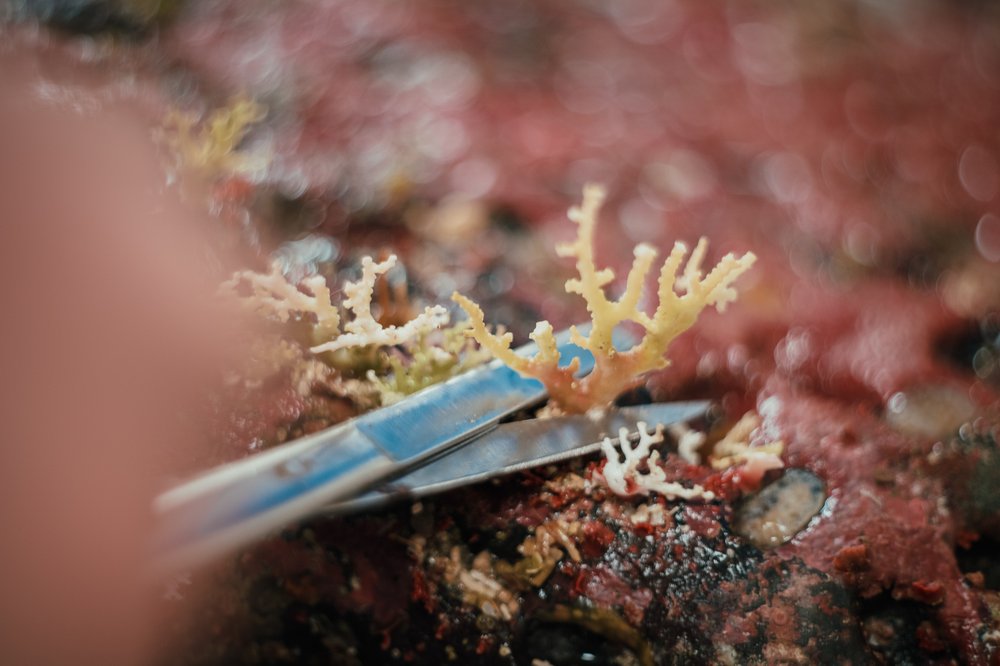
New discoveries through the exploration of deep ocean habitats
In 2023, collaborative efforts with diverse research partners and ocean explorers led to an unprecedented 120 field dive days, utilizing advanced deep-ocean mapping and exploration technology. From small remote submersibles to dedicated deep-ocean submarines and oceanographic vessels, each dive revealed something new.
Read more
Among the many highlights, CDF scientists and partners using the manned submersible HOV Alvin discovered extensive, long-lived deep-sea coral reefs within the Galapagos Marine Reserve (GMR) coined the “Cacho de coral”. It is the first productive reef habitat of its type documented inside the GMR since its creation in 1998. That first discovery as part of the R/V Atlantis expedition operated by the Woods Hole Oceanographic Institute, encouraged the subsequent discovery of two similar deep-sea coral reefs fringing Fernandina Island using novel mapping technology aboard the R/V Falkor (too) expedition and ROV SuBastian in a close partnership with the Schmidt Ocean Institute that same year.
Fringed by thousands of years of built up fossil coral, these pristine reefs are important deep biodiversity hotspots and reference points to understand deep-habitat connectivity between regional MPAs, and are areas that provide crucial goods and services such as carbon cycling and fisheries. The sampling of sediments and fossil coral in these areas that has accumulated over thousands of years is helping to reconstruct past ocean environments as a means to better understand the scale of modern climate change.
Moving into deeper waters, later in 2023 two previously unknown hydrothermal fields were discovered across the Galapagos Spreading Center.
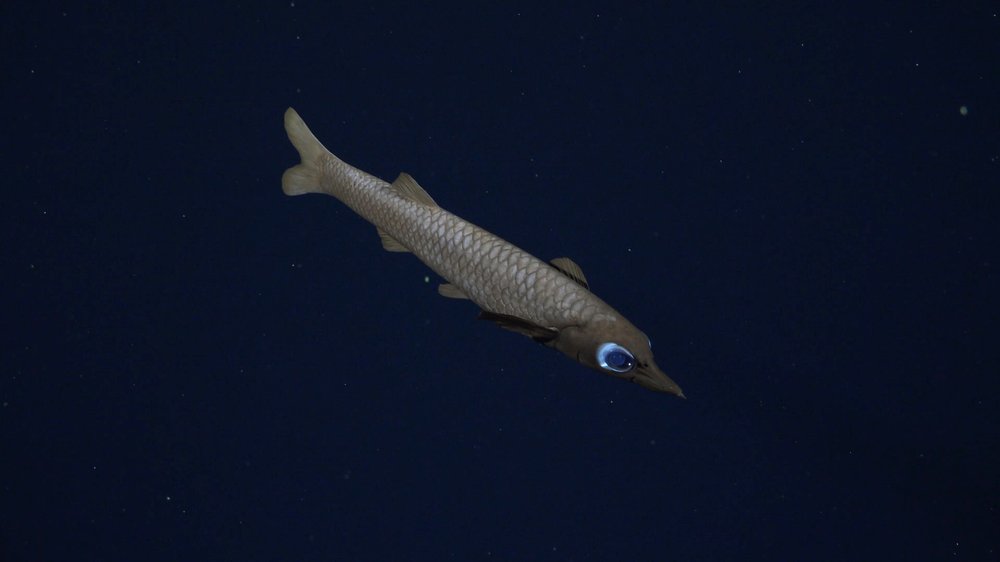
Finding organisms new to science
The use of both manned submersibles and remotely operated vehicles (ROVs) is helping us greatly improve our knowledge of deep-sea biodiversity, adding to important records and collections from geological deep surveys taken over the past century. For example, more than 30 deep-sea organisms new to science were discovered during a single expedition in 2019 inside the GMR onboard the R/V Nautilus in collaboration with the Galapagos National Park Directorate (GNPD) and Ocean Exploration Trust.
Read more
The long-term commitment to improve the deep-species registry continues by building results from the 2023 expeditions into our Natural History Collections. New hydrothermal vent surveys aboard the R/V Falkor (too) taken across the Galapagos Spreading Centre show at least 15 species previously unknown to the region, including a mollusk, known as a monoplacophoran, and often referred to as a “living fossil”.
Along with new species, the use of HD image capture showing habitat use alongside on-site collections has also greatly assisted visual identification and revealed important sites and behaviors, such as specific nursery areas for the eggs of Pacific white rays, that are incubated around low-temperature hydrothermal vents. The nursery observed at the Iguanas – Pinguinos vent field in 2015 during the R/V Nautilus expedition, now mapped in 2023 by the R/V Falkor (too) is the second documented case globally following a similar observation off the Pacific waters of Canada.
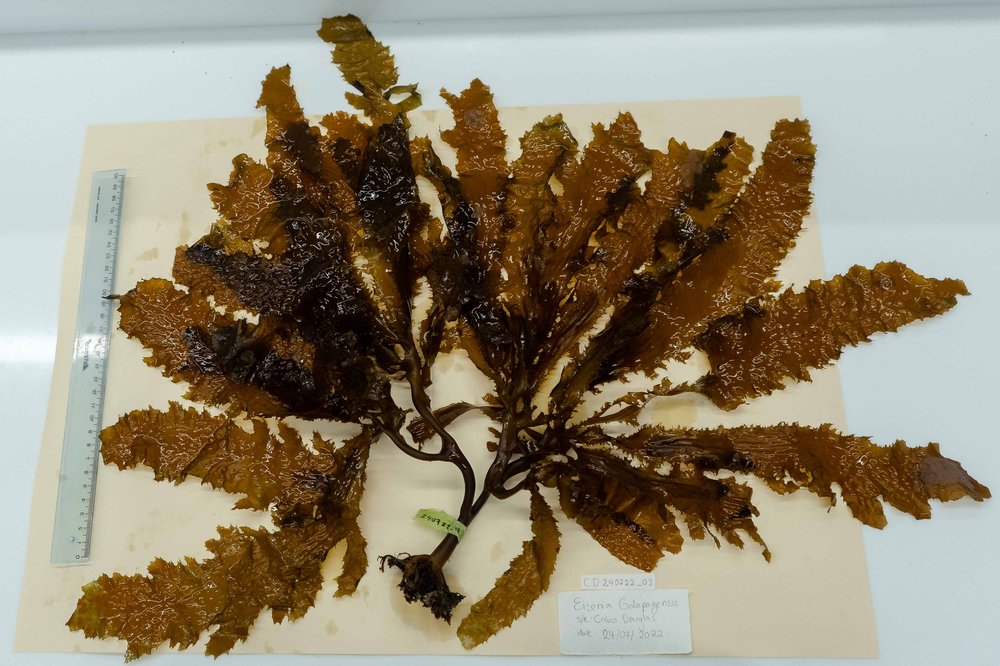
Understanding tropical kelp forests
In 2018, our researchers made a remarkable discovery: a thriving kelp forest found atop a seamount near the island of Santa Cruz at depths between 50-70m. The macro algae found by our scientists was recently confirmed as a form of Eisenia galapagensis, an uncommon deep-water kelp documented by CDF and the Moss Landing Marine Lab in the Galapagos in 2006, also recorded by Dr. Sylvia Earle in the 1990s. This endemic species is rare and endangered, found mostly in the cold and nutrient-rich waters that predominate in the west of the archipelago.
Read more
Kelps are generally understood to be ecosystem engineers that create underwater forests in temperate regions. Like coral reefs and mangroves, kelp forests are important ecosystems, as they support a large number of fauna seeking shelter, feeding, breeding and nursery grounds. Kelp forests are usually found in shallow, nutrient-rich, clear water below 20°C where enough light can reach. Therefore, finding them on the equator, and in abundance was like finding a polar bear in the tropics. As an important structural and productive habitat for many species, knowing their distribution and how they function helps managers prioritize actions designed to safeguard another chapter in Galapagos' extraordinary biodiversity.
Why it matters
New knowledge informs effective conservation action
Each newly discovered species, reef, and ecosystem adds a missing piece to the puzzle of deep-sea biodiversity. This knowledge is essential for effective conservation efforts. Knowing what lives where and how they interact allows us to inform the creation of targeted protection plans, inform novel management models and assess the potential impact of threats like unsustainable fishing or mining.
Protecting Ecosystem Services
Deep-ocean ecosystems, even seemingly "isolated" vents or kelp forests, play vital roles in maintaining the health of the entire ocean. Ancient deep cold-water coral reefs, for example, likely contribute to carbon sequestration, a critical process for mitigating climate change. A better understanding of these roles allows us to manage human activities in a way that protects these services and the overall health of the ocean.
Predicting and Mitigating Threats
By uncovering the deep ocean's secrets, we also gain insights into its vulnerability to potential threats. Many deep-water species are known to grow slowly and be very long-lived, making them particularly susceptible to any disturbance, further complicated by long recovery intervals. Discovering new species means understanding their potential sensitivity to factors like pollution, ocean acidification or temperature changes. Mapping hidden reefs or vents identifies areas requiring specific protection from activities such as bottom-trawling or deep-sea mining. This knowledge equips us to predict and mitigate future threats before they can cause irreversible damage.
Inspiring Conservation Action
Every discovery reveals the beauty and wonder of the deep ocean, highlighting its value and raising public awareness about the need for its protection. The public is more likely to support conservation efforts when they understand what the incredible diversity and ecological importance of these hidden ecosystems signifies for ocean health and future generations.
Join our team onboard the R/V Atlantis 2023 expedition operated by Woods Hole Oceanographic Intstitution as they discover the first recorded deep-sea coral reef to be documented in the Galapagos Marine Reserve
Why you should support us
As an organization in Galapagos committed to pioneer deep-ocean research, and currently coordinating and supporting efforts with partners in the ETP, our program is vital to advance knowledge of deep ocean habitats and inform management of new and established marine protected areas in the region.
But accessing deep-ocean areas is difficult and costly, and requires partnerships and knowledge-sharing to make it work. It is imperative that CDF continues to expand collaborative research efforts to further develop an understanding of these understudied ecosystems, in order to provide relevant, science-based criteria for their future protection in Galapagos and the region.
Supporting our deep-ocean program to the Galapagos and neighboring regions means endorsing scientific progress and protecting our ocean.
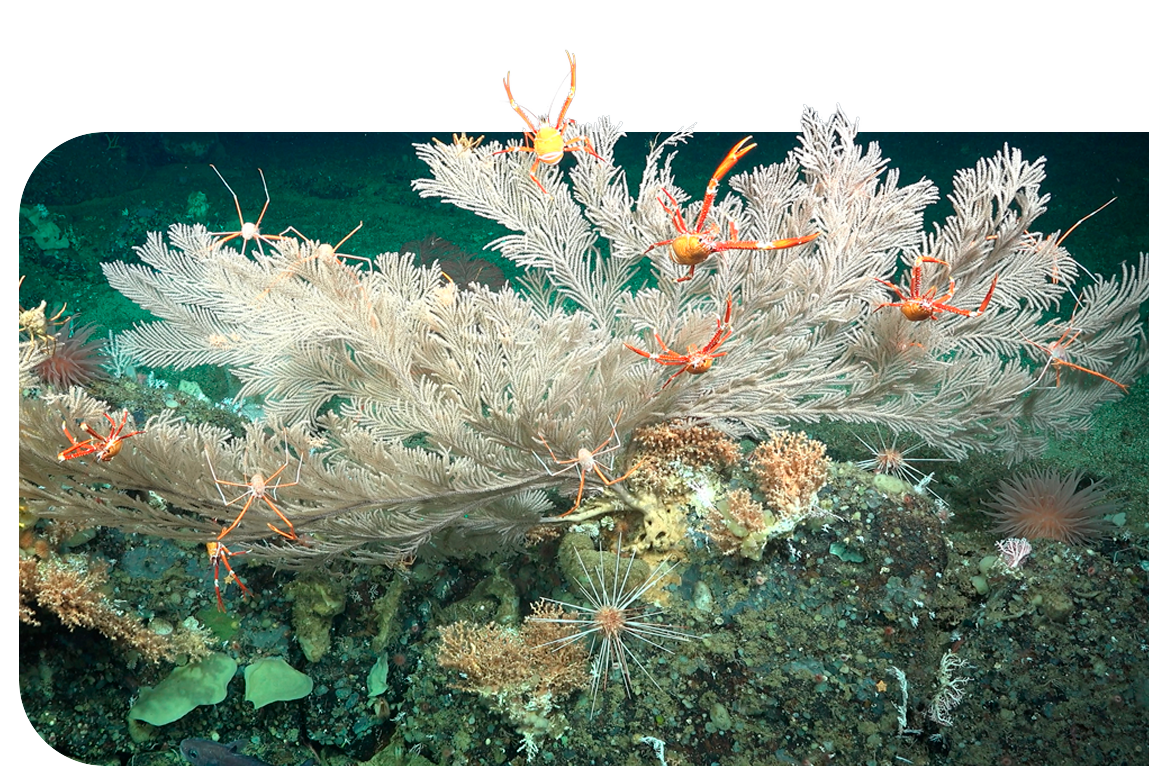
Bibliography
Chen, Chong, John W. Jamieson, and Verena Tunnicliffe. "Hydrothermal vent fauna of the Galápagos Rift: Updated species list with new records." bioRxiv (2023): 2023-11.

Protect Galapagos, Impact the World
The impact you make on this small ecosystem of enormous biodiversity is part of a larger footprint you are leaving for the world's future. Join us on our mission to safeguard one of our planet’s most important natural treasures through science and conservation action by making a donation today. Thank you for making an impact with us.

